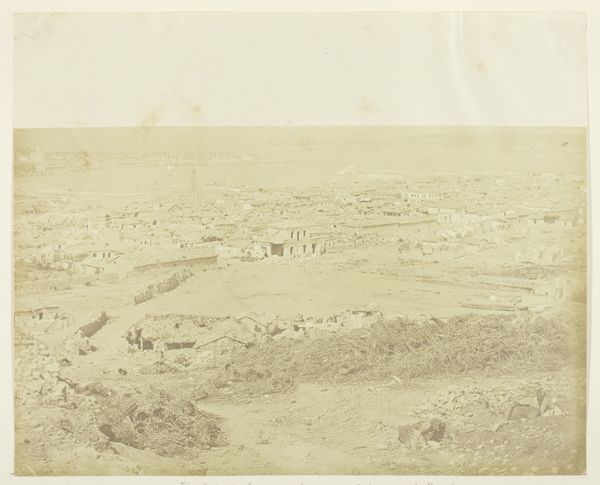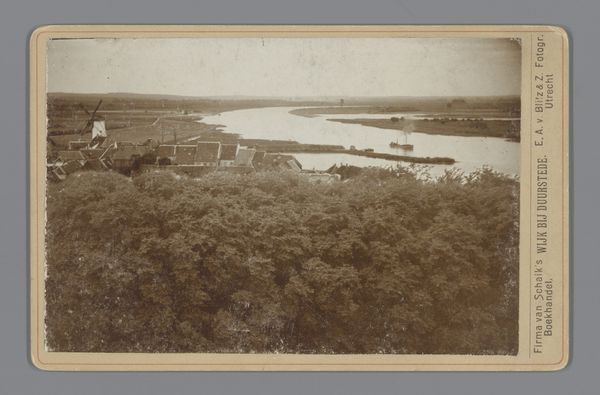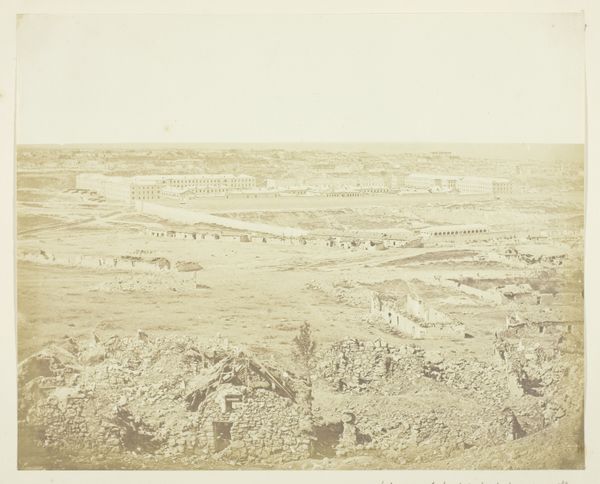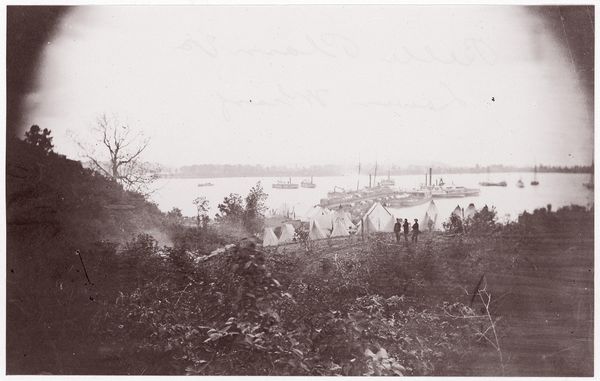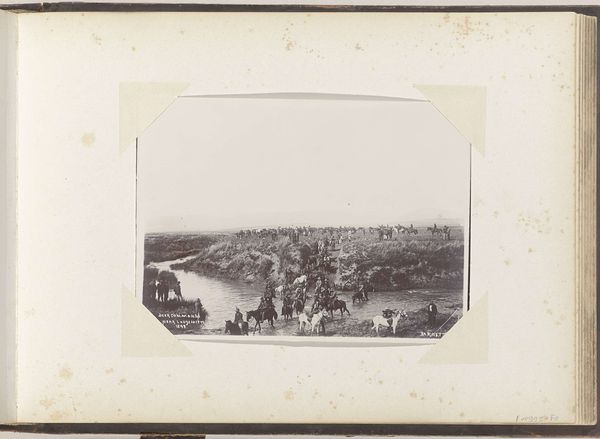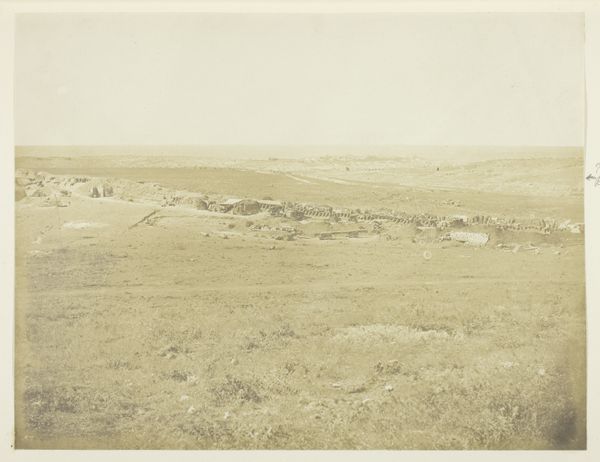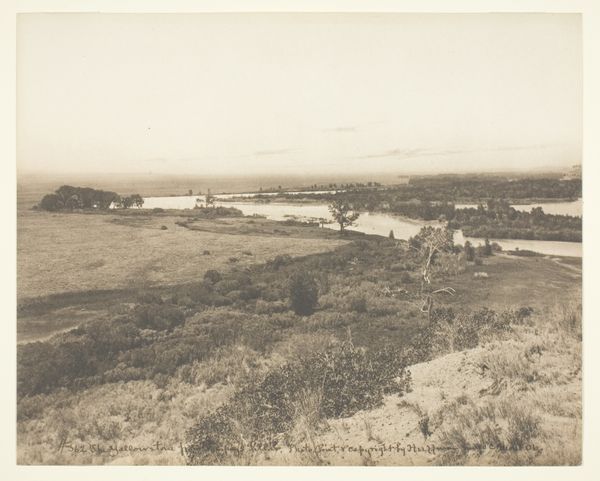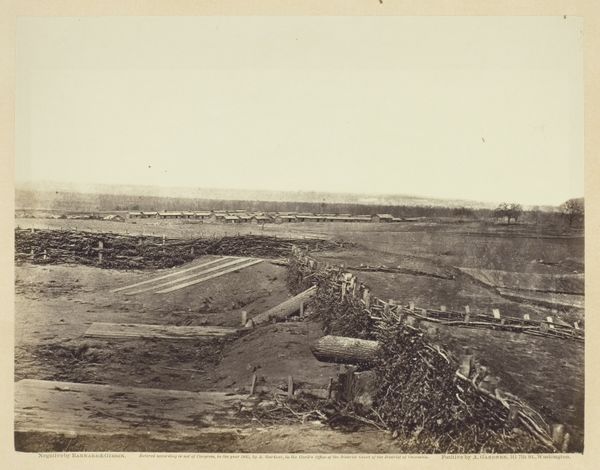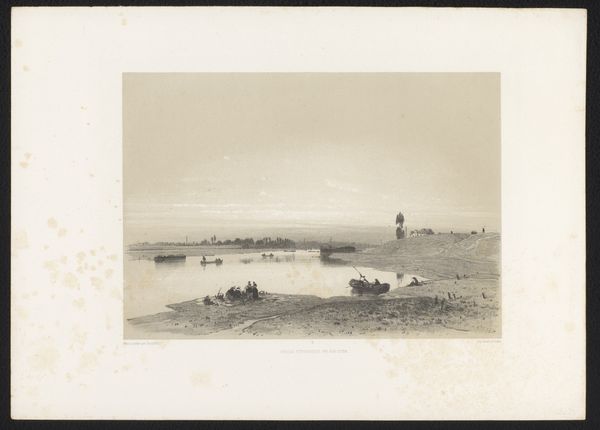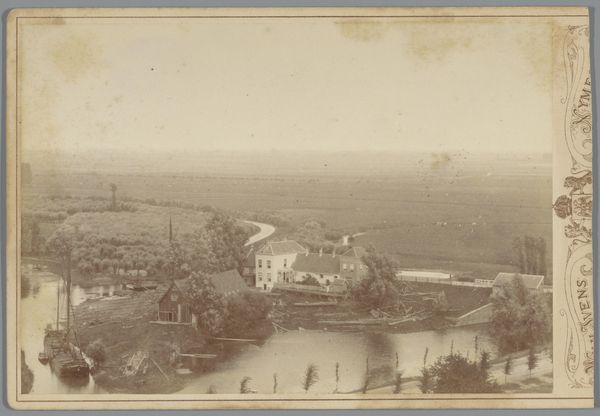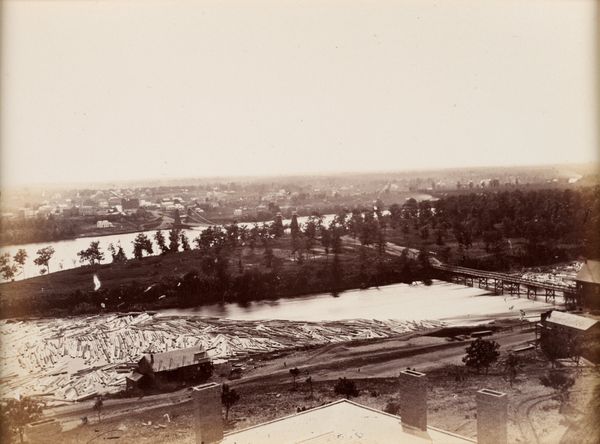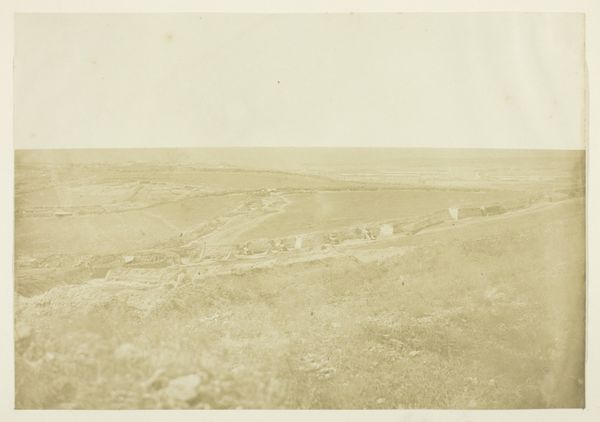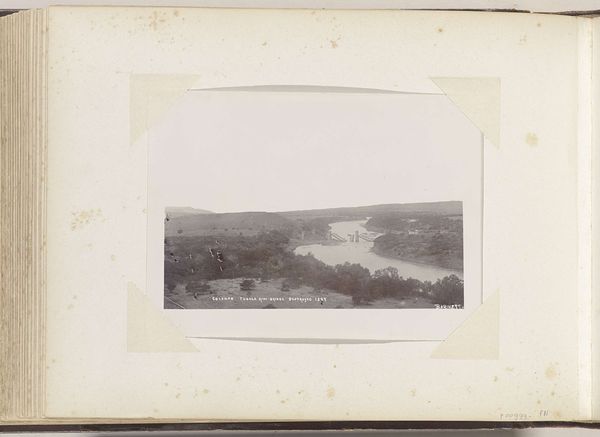
Inner Harbour of Sebastopol, Bridge Connecting the City with the Suburb Fort Nickolas at the Entrance 1855
0:00
0:00
daguerreotype, photography
#
16_19th-century
#
landscape
#
daguerreotype
#
photography
Dimensions: 23.1 × 30.4 cm (image/paper); 31.9 × 40.5 cm (mount/page)
Copyright: Public Domain
Curator: Staring into this 1855 daguerreotype by James Robertson, "Inner Harbour of Sebastopol, Bridge Connecting the City with the Suburb Fort Nickolas at the Entrance," I’m struck by how delicate the scene appears, almost a ghost of a memory. The hazy tones lend a sort of otherworldly feel to it, don’t you think? Editor: Ghostly, yes, and haunted. This image speaks volumes about the human cost of conflict, particularly the Crimean War. Consider that photography was still relatively new, but already it's being wielded to document destruction on this scale. Look at how the bridge becomes this fragile connection between a ravaged city and its fort—a testament to disrupted infrastructure. Curator: True. The light feels muted, like a shroud. I find it moving, the way such a seemingly fragile medium, this early photograph, captures such devastation with an ethereal beauty. Ironic, maybe? Editor: I agree. The choice of the daguerreotype – its reflective surface, its one-of-a-kind existence – elevates the role of the photographic witness. This is about more than mere representation; it's about accountability, about etching the reality of war into our collective consciousness. The silvery tones amplify that elegiac quality, a lament captured in metallic stillness. And don’t forget, Robertson had to transport cumbersome equipment across war-torn regions to produce images like this. That commitment, that risk, should be considered. Curator: Thinking about his dedication gives the piece an interesting twist! Did he think of himself as preserving the scene, protesting it, or maybe something in between? Perhaps hoping the image could stand in place of the real. Editor: Robertson's work brings up fundamental questions about what conflict photography is for: Is it journalism, advocacy, art, or, perhaps, all three blurred together? It certainly invites reflection on who bears the brunt of war and who gets to document and interpret it. Curator: Definitely. The work has lingered longer in my mind, shifting and changing form as more facets have come to light. Editor: Absolutely. It's a photograph that requires us to remember the human lives tangled in geopolitical events, ensuring that their stories aren't erased by time or propaganda.
Comments
No comments
Be the first to comment and join the conversation on the ultimate creative platform.
